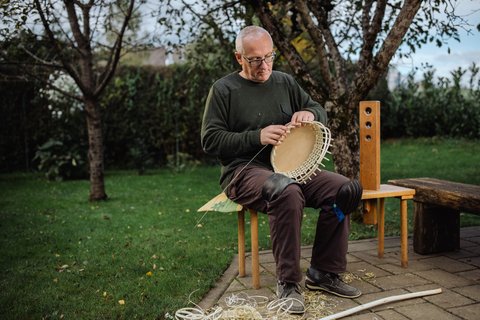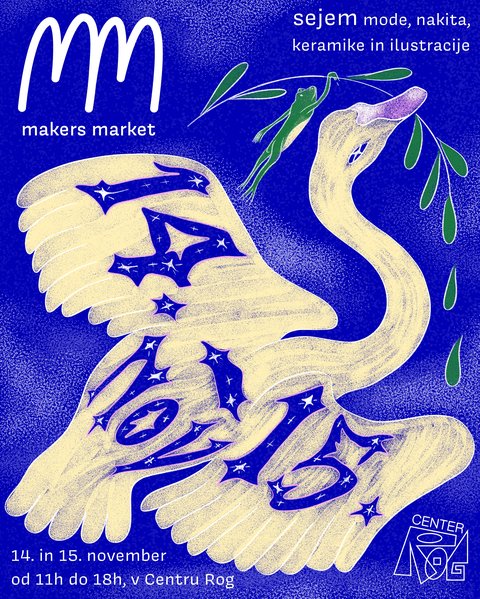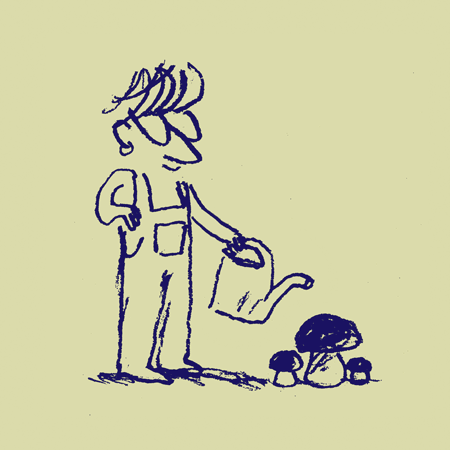Rog Creathon: Boundaries & Friction
We’re excited to announce the new edition of Rog Creathon! This intensive, collaborative event offers a unique opportunity to dive deep into creative problem-solving and innovative design alongside renowned international mentors—all within the inspiring setting of the largest creative hub in Europe.
Dedicated to young designers, creatives, and makers under 30, Rog Creathon will take place from 10–12 November 2025 in Ljubljana, Slovenia.
This 48-hour design sprint invites 25 selected participants to explore the theme Boundaries and Friction, guided by an outstanding lineup of mentors product and textile designer Anna Resei, architect and scholar Igor Siddiqui, architect, designer, and professor Virginia San Fratello, sculptor and professor of sculpture techniques Alberto Gianfreda, designer and researcher Annelys de Vet.
Our goal is to spark innovation through the convergence of diverse disciplines and materials—leading to the creation of bold, functional prototypes that push boundaries.
Don’t miss this chance to be part of a transformative experience: connect with like-minded young professionals from around the world, have fun, and compete for special prizes!
We look forward to welcoming you to Rog Creathon!
Rog Creathon is part of the international festival RogDesignDays (10–14 November 2025), which also includes Rog Forum (13–14 November 2025), a conference featuring international panelists and Rog Expo (12 November 2025 – 8 February 2026), an exhibition showcasing the yearly production of Center Rog.
Rog Creathon is supported by CraftWork 4.0 All – European Emerging Craft Platform, funded with the support of the European Commission.

About Center Rog
Center Rog in Ljubljana, is the largest production hub in Europe catering to amateur makers and professionals in applied arts, design, crafts, and architecture, with a strong focus on sustainable development. Inaugurated in October 2023 and located in a revitalized bicycle factory in the centre of Ljubljana, the hub offers 8,500 m² of shared production space, with 9 production labs, 20 free-of-charge studios for creatives developing sustainable products, 5 residential apartments, an exhibition hall, shops for local designers, and indoor and outdoor public spaces open to everyone.
About the challenges
In today’s world of climate urgency, cultural division, and accelerating technology, boundaries are constantly shifting—and so are the frictions they generate. Rather than avoiding these tensions, this year’s Rog Creathon invites you to engage with them directly: to collide materials, disciplines, and perspectives in pursuit of unexpected, functional outcomes.
This intensive, collaborative event is your chance to immerse yourself in creative problem-solving and innovative design alongside renowned mentors, within the inspiring environment of the largest creative hub in Europe.
Rog Creathon features five distinct challenges, each developed by internationally recognized mentors in product design, architecture, textile design, and cross-disciplinary fields. These challenges are created in collaboration with our Lab Managers, who will also serve as technological mentors throughout the event.
Each challenge will host a team of five selected participants. Every team will receive:
- A curated box of materials
- 10 hours/day access to nine production labs, including machines, tools, and additional mentorship
- 48-hour access to the shared assembly space
- The opportunity to present their prototype to a panel of experts at the end of the sprint
The winning team will be announced during the opening ceremony of Rog Forum.
All teams will also have the opportunity to:
- Present their work at the Rog Expo exhibition
- Showcase their results to the international professional community during the RogDesignDays festival
Who can apply and how?
Eligibility: Rog Creathon is open to all creative individuals aged 18 to 30, from any background or discipline.
How to Apply: to apply, simply fill out the online application form (link below) and include a short video presentation (max. 3 minutes) introducing yourself and sharing what motivates you to participate.
Application fee: None
Application deadline: Monday, 6 October 2025
Number of participants selected: 25 (5 per challenge)
What do I get if I get selected:
- Free accommodation at Hostel Celica (Ljubljana’s top-rated hostel, just 5 minutes from Center Rog) from 9–14 November 2025 (for international and out-of-town Slovenian participants)
- Free participation in Rog Creathon, including meals during the event: 10–12 November 2025
- Free entry to Rog Forum (13–14 November 2025), including meals
- Access to all 9 production labs, mentorship, materials, and a vibrant creative environment
*** Participants of the Creathon who come from countries where political, environmental, economic, or war-related challenges have a significant impact on daily life can apply for travel support. In your application, feel free to tell us a bit about the challenges you’re facing and why you think this kind of support would be helpful. Based on your input, we’ll select 5 participants to receive additional support for travel and, if needed, visa costs. All shared information will be kept confidential. ***
Are there Awards? Absolutely!
Winning Team Prizes
- For Slovenian participants living in Ljubljana: One-year Center Rog membership and user package
- For international and out-of-town Slovenian participants: A two-week residency at Center Rog (between January and July 2026) with full access to production labs and covered travel costs for foreign participants
For all participants:
- Your team’s work will be showcased at the Rog Expo international exhibition (12 November 2025 – 8 February 2026)
- You’ll receive a certificate of participation in Rog Creathon
- Plus, a reference certificate acknowledging your contribution to the exhibition
Timeline
- Application Deadline: Monday, 6 October 2025
- Notification of Selection: By Monday, 13 October 2025
- Early November: Online meeting with mentors & challenge presentation
- Sunday, 9 November: Arrival in Ljubljana & check-in at Hostel Celica (for foreign participants)
- Monday, 10 November: 09:00 – Registration; 09:30 – Tour of facilities; 10:00 – Official start of Rog Creathon
- Wednesday, 12 November: 10:00 – End of Rog Creathon & setup of results in the exhibition space; 11:00 – Presentation of results to the jury; 19:00 – Official opening of Rog Expo & announcement of winners
- Thursday–Friday, 13–14 November: Rog Forum (international conference); Friday afternoon: Farewell drink
- Saturday, 15 November: Departure of participants
For more information contact us at megi.pilko@center-rog.si
Curious about last year’s RogDesignDays?
Check out the last years Rog Creathon highlights and the exhibition opening video! HERE is the last years programme of the whole festival and a short video summary.
5 Designer Challenges
CHALLENGE 1: BACK TO THE FUTURE: CRAFTING OBJECTS FOR A NOMADIC WORLD
International Mentor: Anna Resei, Product and Textile Designer (Germany, Austria)
Rog mentors: Uroš Topić (Textile lab) and Gregor Stražar (Metal Lab)
Labs: Textile Lab, Metal Lab, FabLab
Challenge Description:
In an era marked by climate instability and displacement, the way we inhabit space is rapidly evolving. More people are living on the move—whether by necessity or choice—reshaping our understanding of home, shelter, and belonging. Designers are therefore challenged not only to solve problems but to anticipate new relationships between materials, humans, and the planet.
This challenge invites you to design for a nomadic life in a world in flux.
How can objects adapt to multiple environments—indoor and outdoor, private and public, fixed and mobile? How can design respond to the needs of travellers, nomads, or anyone transitioning between spaces?
Challenge Objectives:
Design a multifunctional object that serves at least two purposes—such as spatial, bodily, social, or symbolic. The object should be portable and adaptable, blurring the boundaries between furniture, tool, garment, or shelter. Incorporate both metal and textile in unexpected ways to challenge conventional material roles and explore new relationships between them.
Materials: Selection of metal and textile waste/leftovers
CHALLENGE 2: HYBRID CONSTRUCTIONS: COLUMNS AS LIFE SUPPORT
International Mentor: Igor Siddiqui, Architect (USA, Croatia)
Rog mentors: Jaka Oman (Wood Lab) and Maruša Ramšak (Green lab)
Labs: Wood Lab, Green Lab, Metal Lab
Challenge Description:
With natural resources dwindling and waste multiplying, traditional material categories—like natural/artificial or temporary/permanent—no longer suffice. Architecture must evolve by reimagining materials as layered, hybrid systems that respond to environmental challenges. This challenge focuses on the architectural column, an element rich in both function and meaning throughout the history of architecture, from structure to representation.
Inspired by diverse references—from engineered wood to natural structures like ant towers—you will explore new material combinations through hands-on, full-scale experimentation. The goal is to create innovative column prototypes, inviting you to rethink it as a hybrid form that supports both structure and life.
Challenge Objectives:
Design and build a self-supporting, full-scale column at least as tall as you. Your design should blend materials and functions, expressing hybridity in form and meaning. Finished columns will be displayed together to explore their spatial and environmental impact.
Materials: Scrap wood, metal, found materials, mycelium blocks, plants, insects, bacteria
CHALLENGE 3: BIO FABRICATION: FROM WASTE TO WONDER
International Mentor: Virginia San Fratello, Architect (USA)
Rog mentors: Tauan Bernardo (FabLab) and Tomo Per (FabLab)
Labs: FabLab, Green Lab, Ceramic Lab
Challenge Description:
Every year, over 1 billion tons of food go to waste—nearly a fifth of all available food. But what if yesterday’s leftovers could power tomorrow’s innovations? This challenge flips the script on waste by transforming kitchen scraps into biodegradable products through 3D printing.
We’ll explore the untapped potential of food waste as a manufacturing material, using both direct printing and mold-based methods. Blending design, material science, and sustainability, this interdisciplinary challenge is meant for anyone excited about turning trash into treasure. Participants will develop functional, eco-friendly products that reduce pollution, support a circular economy, and lower our environmental footprint.
Challenge Objectives:
Design and fabricate a functional domestic object using provided materials—dehydrated and pulverized food waste. Your creation should demonstrate innovation, sustainability, and practical everyday use.
Materials: Dehydrated and pulverised recycled food waste
CHALLENGE 4: MODULAR INTERVENTIONS: CRAFTING URBAN INFRASTRUCTURE
International Mentor: Alberto Gianfreda, Sculptor (Italy)
Rog mentors: Brigita Gantar (Ceramic Lab) and Metka Mikuletić (Jewelry Lab)
Labs: Ceramic Lab, Glass Lab, Jewelry Lab
Challenge Description:
As cities become more uniformed and industrialised, handmade materials and unique designs can help bring back a sense of identity and community. Ceramics—solid, earthy, yet fragile—and metal—strong, flexible, and instrumental—together offer the potential to create urban furniture that transcends mere function, inviting social rituals, imagination, and play.
This challenge invites you to rethink public space and explore how everyday urban elements—such as benches, trash bins, stands, drinking fountains, or street lighting—can become something more: tools for connection, sources of inspiration, or even monuments to local identity. How can materials and form express belonging, and help shape community spaces that resist uniformity?
Challenge Objectives:
Design a piece of modular urban furniture (e.g., bench, table, stand, trash bin, drinking fountain, street lighting) that integrates ceramic and metalworking techniques. Your piece should go beyond standard utility to carry symbolic, cultural, or sensory meaning. Aim to create an object that becomes a gathering point, a playground for the imagination, or a quiet invitation to pause and reflect within the rhythms of everyday urban life.
Materials: using discarded ceramic pieces (cracked plates, mugs, tiles) and waste metal (copper, brass, wire)
CHALLENGE 5: OBJECTS OF CARE: DESIGNING FOR SOLIDARITY
International Mentor: Annelys de Vet, Designer (Netherlands, Belgium)
Rog mentors: Nuša Jurkovič (FabLab), Vita Ivičič (Textile lab)
Labs: FabLab, Textile lab, Wood Lab
Challenge Description:
In a time of growing global inequality, environmental collapse, and social fragmentation, how can design cultivate solidarity, care, and resistance? This challenge draws inspiration from Disarming Design from Palestine, a platform co-founded by Annelys de Vet, which uses thought-provoking design as a tool for social justice and cultural expression.
Participants are invited to explore design as a political act—developing everyday objects that speak to shared struggles, mutual support, and alternative forms of value. Think, for example, of the pillowcase that protects your dreams (Poetic Nights), the baby blanket that sings silenced songs (Lullaby), the alternative chess set (Watchtowers and Watertanks Game), or the brush that erases checkpoints (Checkpoint Brush).
This challenge invites collaborative work and critical questioning of the politics behind everyday objects: Where do the materials come from? Who makes them—and under what conditions? Who benefits? What stories do they tell—and how do they shape us in return?
Challenge Objectives:
The objective is to explore how everyday objects can act as conversation starters, disarm or provoke, serve as calls to action, offer gestures of mutual aid, or disrupt established norms. Participants are encouraged to think beyond individual contributions and consider how their work can form a collective narrative—where the collection becomes more than the sum of its parts.
The ultimate goal is to create thoughtful, well-crafted objects that challenge dominant systems, carry critical stories, and serve as tools for solidarity, resistance, and empowerment.
Materials: Found materials, textile, thread, wood, 3D printing and love
Mentors’ biographies
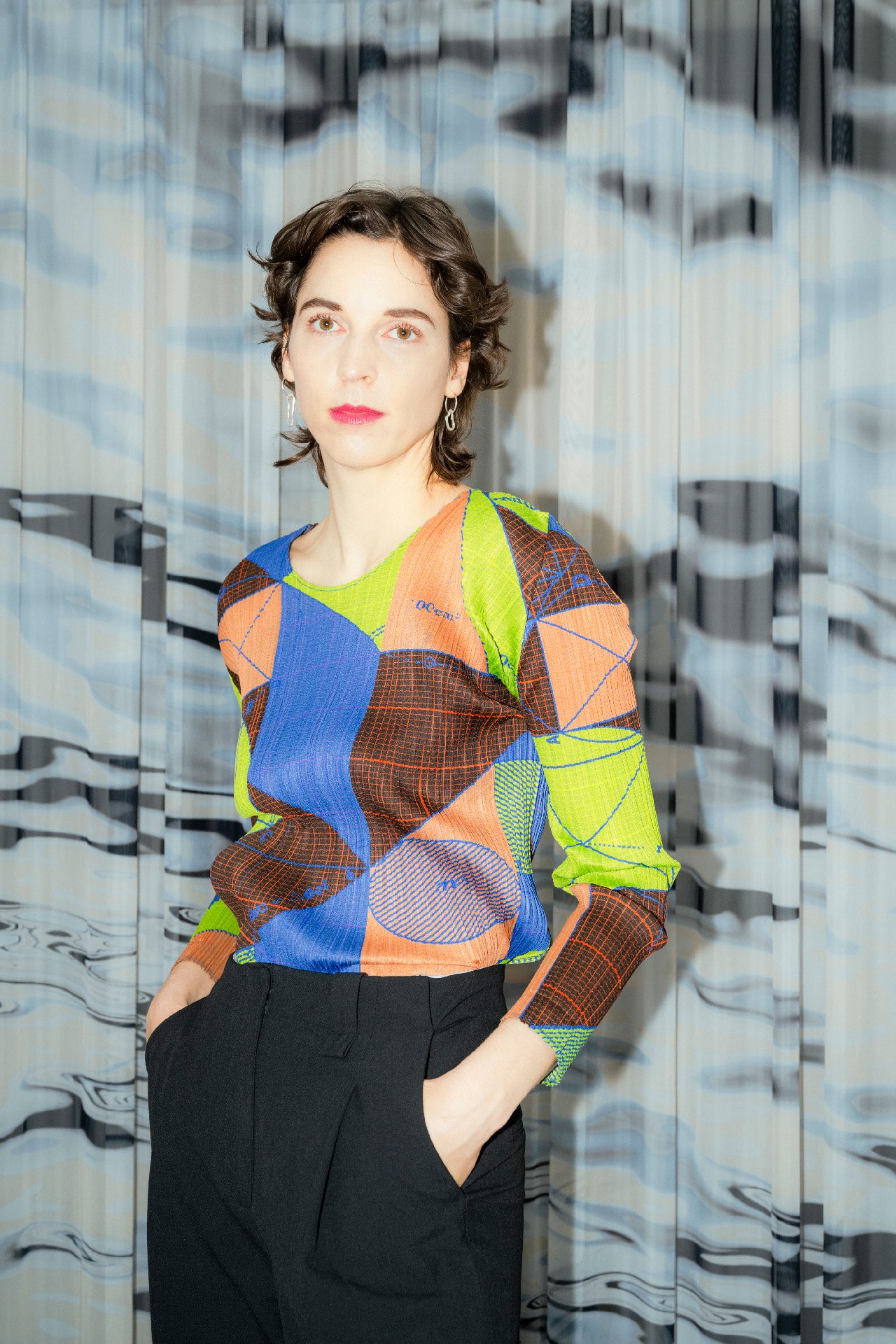
ANNA RESEI (Austria/Germany) is a designer known for her conceptual approach to interior objects, often working at the intersection of speculative fiction and narrative design. With a background in product and textile design, she holds an MA from Design Academy Eindhoven in the Netherlands. Anna leads her own design studio and collaborates with various companies to develop innovative, forward-thinking projects. Alongside her practice, she lectures at universities, sharing her expertise in design and storytelling.
→ Get to know Anna Resei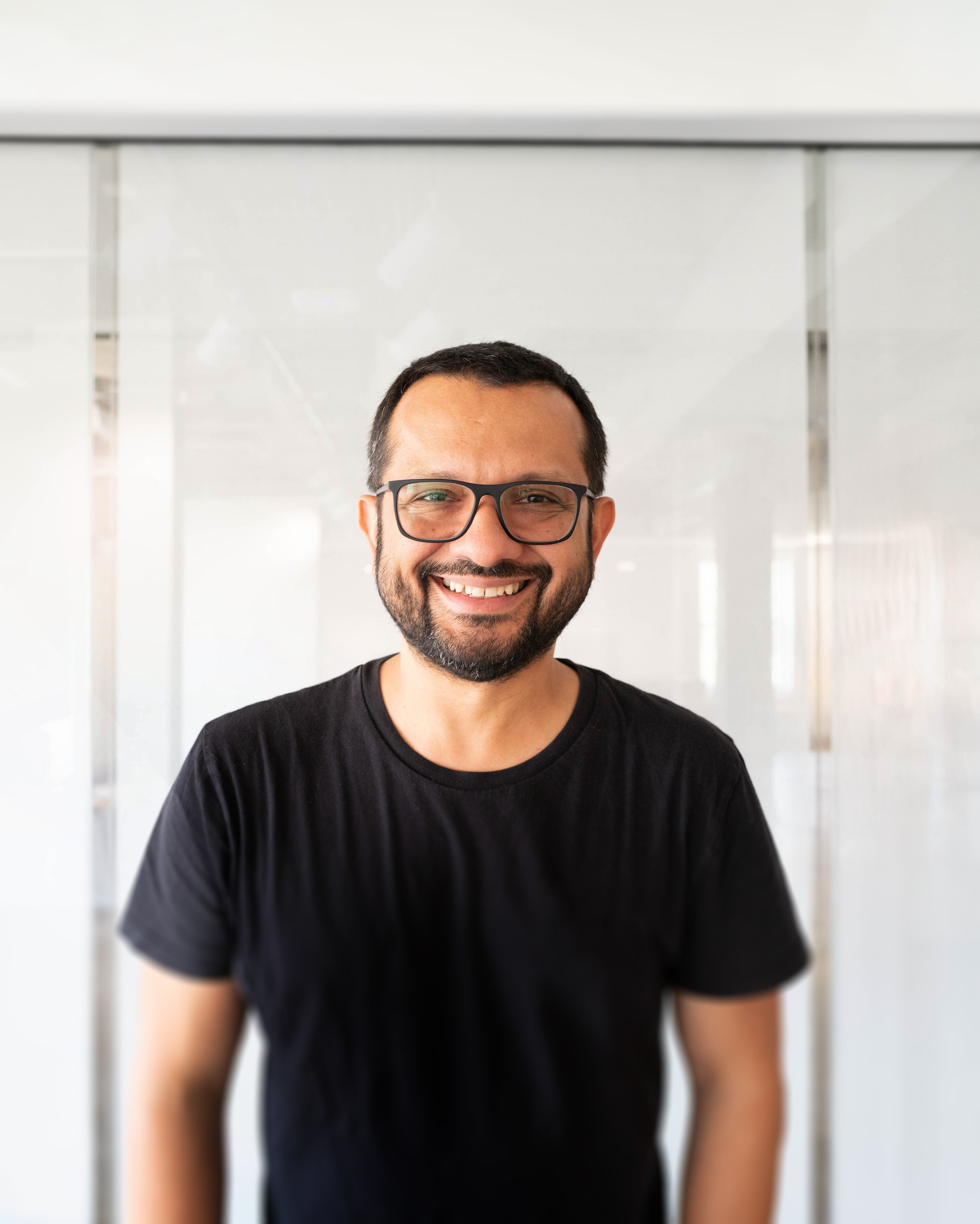
IGOR SIDDIQUI (USA/Croatia) is an architect and scholar based at The University of Texas at Austin, where he serves as Associate Professor and Director of Interior Design. His award-winning work explores the intersection of design innovation and public engagement, resulting in a diverse body of artifacts—including books, exhibitions, ephemeral environments, speculative objects, images, installations, and building proposals. He is the author of the recently published book Oblique Experiments: Claude Parent’s Architectural Installations (1969–1975), and has contributed numerous essays, articles, and chapters to both academic and popular publications. Siddiqui earned his Master of Architecture from Yale University, where he was awarded the Samuel J. Fogelson Memorial Award for Design Excellence.
→ Get to know Igor Siddiqui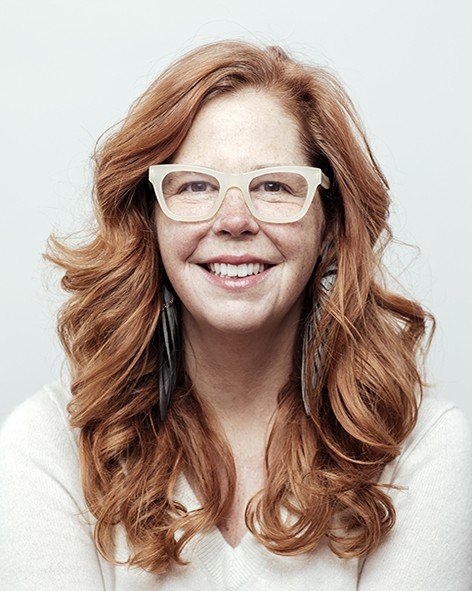
VIRGINIA SAN FRATELLO (USA) is Chair of the Department of Design at San José State University in Silicon Valley and the 2025 winner of the Cooper Hewitt Smithsonian National Design Award for Digital Design. She is a design activist, author, and thought leader in additive manufacturing, architecture, and interior design. Her practice, Rael San Fratello, was named an Emerging Voice by the Architectural League of New York, and she is a co-founder of Emerging Objects, a 3D printing MAKE-tank. She is also co-author of Printing Architecture (Princeton Architectural Press, 2018), which explores sustainable, experimental materials in 3D printing, such as grape skins, salt, and sawdust. San Fratello’s work bridges traditional practices with emerging technologies, pushing the boundaries of how we think about design, construction, and environmental responsibility. One of her most showcased projects is the Teeter-Totter Wall placed on the border between Mexico and USA.
→ Get to know Virginia San Fratello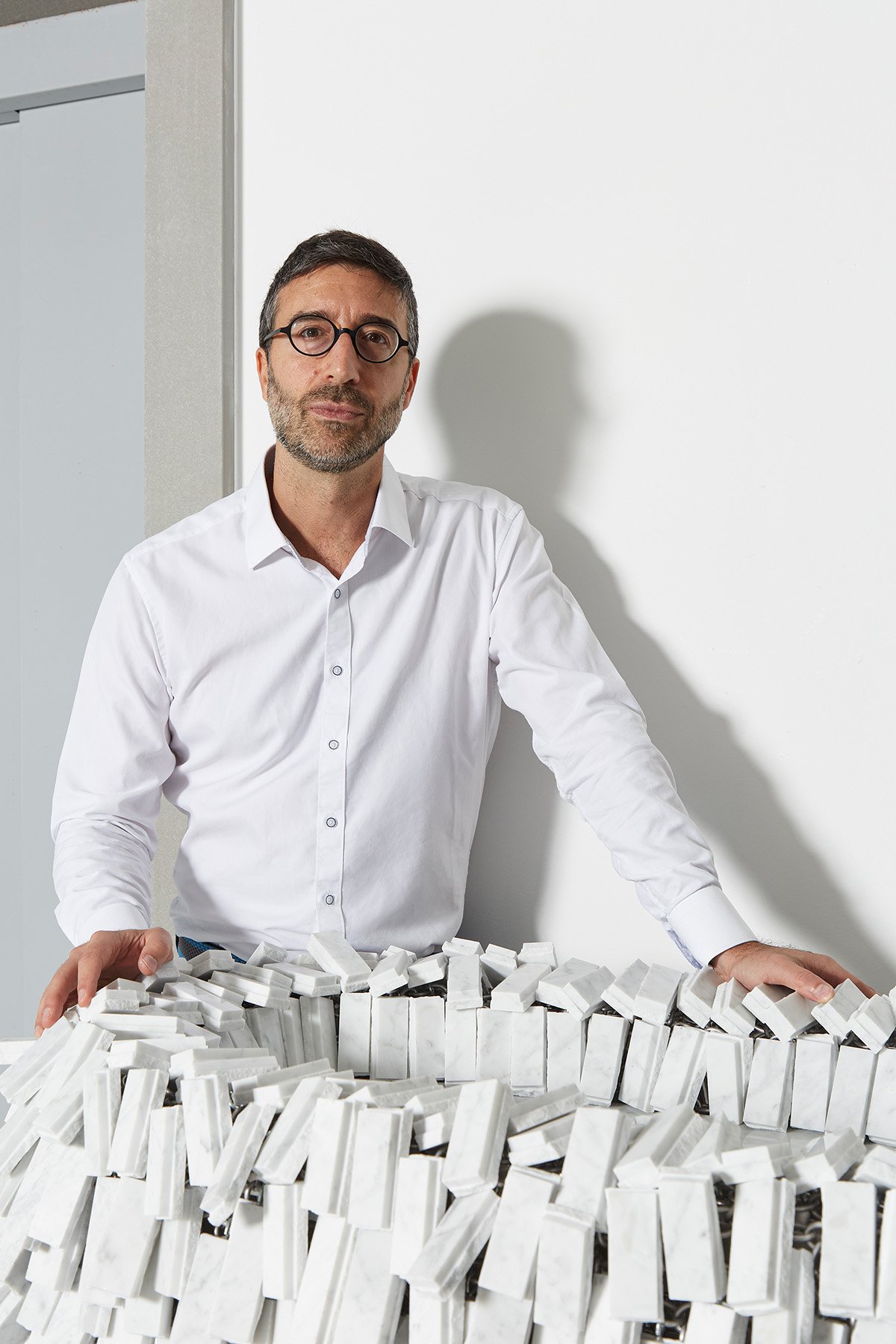
ALBERTO GIANFREDA (Italy) is a sculptor and educator based at the Accademia di Belle Arti di Bologna, where he teaches Sculpture Techniques. His practice explores themes of resilience and identity, with a focus on the adaptability of materials and fostering interdisciplinary dialogue between sculpture, architecture, and urban planning. He has exhibited in prominent venues in Italy and abroad, including the Castello di Rivoli, the Estorick Collection in London, the Shenzhen Biennale (China), the Canova Museum in Possagno, and the National Museum of Slovenia. His works are part of significant permanent collections, such as the MIC – International Museum of Ceramics in Faenza (ITALIA project), as well as public spaces including Palazzo Lombardia in Milan and the Church of the Tolentini in Venice.
→ Get to know Alberto Gianfreda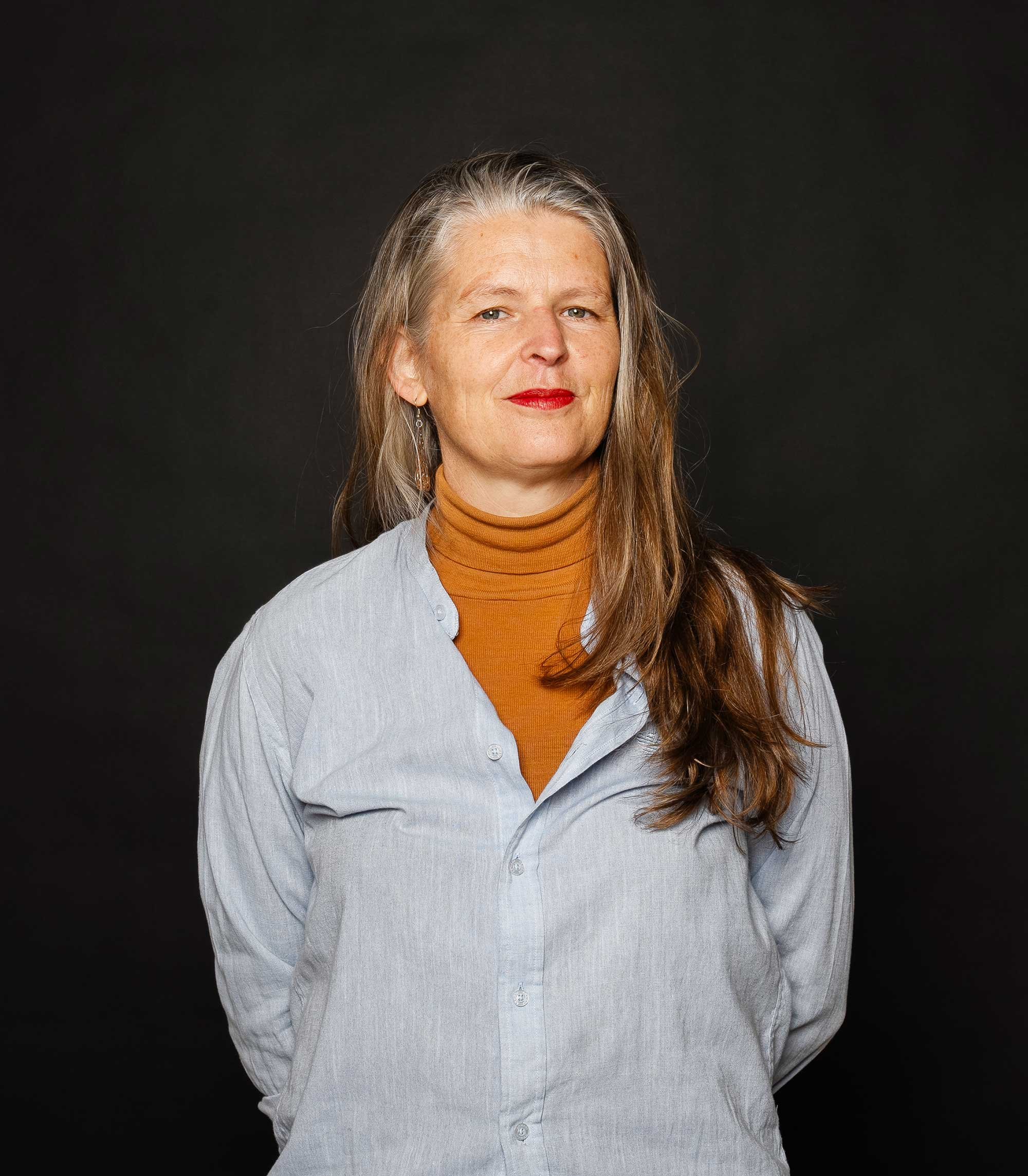
ANNELYS DE VET (Belgium; Netherlands) is a designer, educator, and researcher engaged in participatory design for social and political change. She teaches at Sint Lucas School of Arts Antwerp and recently completed a PhD on participatory design at ARIA (Antwerp Research Institute for the Arts). She co-founded Disarming Design from Palestine, led the Disarming Design MA program at the Sandberg Instituut Amsterdam, and is the founding editor of the Subjective Atlas series. Her work explores design’s role in activism, critical pedagogy, and alternative narratives.
→ Check out the Subjective AtlasesFrequently Asked Questions
- I find all the challenges interesting. Can I apply to all of them?
In the application form, you can select your preferred challenge as well as a second-choice alternative. The selection committee will consider both preferences when making final decisions. - Do I have to cover my own travel expenses to Ljubljana to attend the event?
If selected, Center Rog will cover your accommodation at Hostel Celica (9–15 November 2025), participation in Rog Creathon, and a ticket for Rog Forum (13–14 November 2025). However, you will need to cover your own travel expenses. We recommend exploring mobility grants such as Erasmus+ to help with travel costs. - How should I prepare the presentation video?
Create a video up to 3 minutes long introducing yourself to the jury. Tell us who you are, your areas of interest, what you do (professionally or as a hobby), and why you want to participate in your chosen challenge. Upload the video to a platform like YouTube, Vimeo, WeTransfer, or Google Drive, and share the public link in your application form. Please ensure the link is accessible without needing a request for permission. - Will food be provided during the event?
Yes! During Rog Creathon (Monday to Wednesday), breakfast, lunch, and dinner will be provided. On Thursday and Friday (during Rog Forum), lunch and snacks will be available. - Is there an application fee?
No, participation in Rog Creathon is completely free—there is no registration fee. - Can I get an invitation letter from Center Rog for administrative purposes?
Yes! If you are selected, we can provide an invitation letter upon request. - Is it possible to get support for travel costs?
Yes, but limited. Only participants from conflict areas can request travel cost support. In the application, indicate your situation and briefly describe the dangers or challenges you face. Keep it short and clear so the committee can evaluate your request. We are able to cover travel (and visa) costs for up to 5 participants. Requests are accepted until September 20, 2025. - What is the Rog Creathon experience like?
Check out highlights and testimonials from the last edition here: Rog Creathon 2024
See more
Lufta
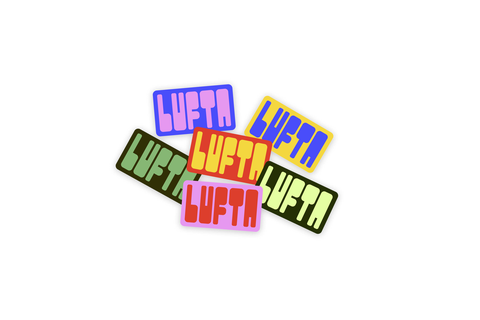
Lufta je inovativen in okolju prijazen stol, ki je napihljiv in ga lahko uporabljamo tako v notranjih kot tudi v zunanjih prostorih. Namenjen je vsem, ki v pohištvu iščejo trajnost in odgovornost do okolja. Zaradi svoje lahke in prenoslj...

